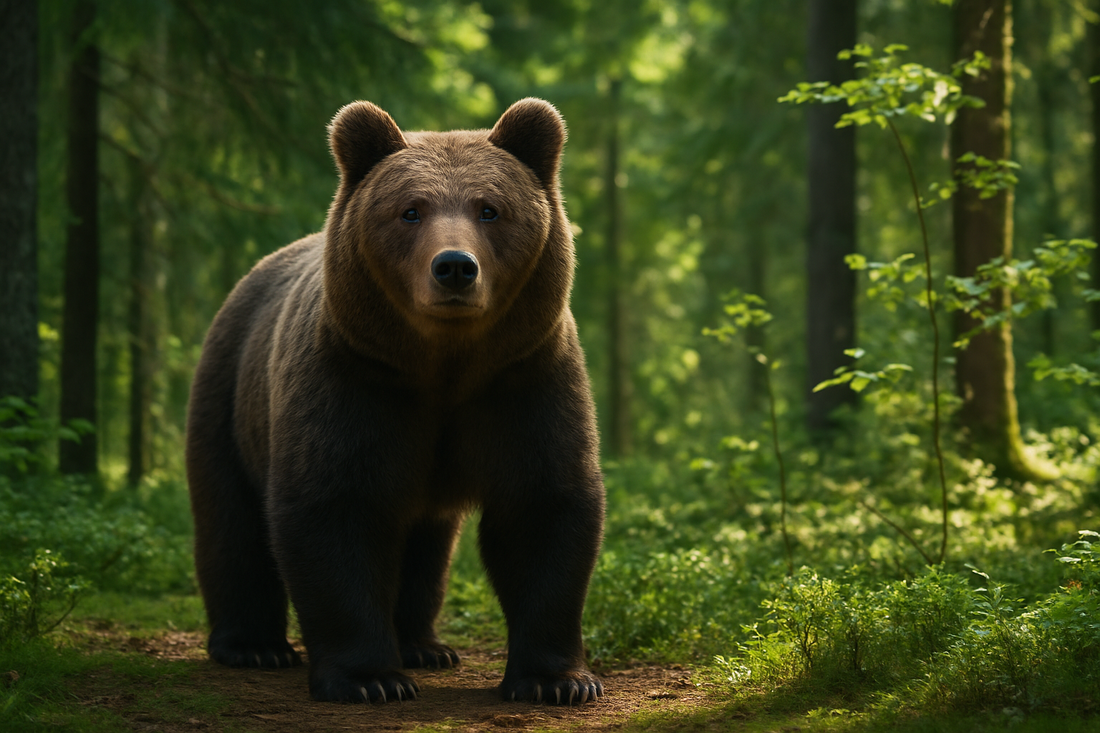When people think of bears, they often picture either a fluffy cartoon or a dangerous predator. But bears are far more than stereotypes. They are complex, intelligent creatures that play vital roles in the ecosystems they inhabit.
Let’s unpack the truth about these powerful animals and explore their real place in the natural world.
🐻 The Bear Family
There are eight types of bears found across the globe:
-
American Black Bear
-
Brown Bear (includes grizzlies)
-
Polar Bear
-
Asiatic Black Bear
-
Sun Bear
-
Sloth Bear
-
Spectacled Bear
-
Giant Panda
Each of these species has evolved to suit its specific environment, from Arctic ice to tropical forests. While their size and coloring may differ, all bears share traits like strong limbs, thick fur, and an excellent sense of smell.
🧠 Brains Beneath the Bulk
Bears aren’t just strong—they’re smart. They’ve shown problem-solving skills, memory retention, and the ability to adapt to human behavior. In areas with frequent camping, some bears have even learned how to open car doors, unzip tents, and seek out hidden snacks.
Their intelligence helps them survive in changing environments and avoid danger, making them far more than just instinct-driven animals.
🏞️ Lone Wanderers with a Soft Side
Most bears prefer solitude, but that doesn’t mean they lack social behaviors. Cubs stay with their mothers for up to three years, learning everything from hunting to tree climbing. During mating season or around food sources, bears may interact briefly—sometimes even tolerating each other’s presence.
Polar bears, while mostly solitary, have been seen gathering peacefully at large feeding sites, like washed-up whale carcasses.
❄️ Not Quite True Hibernation
People often say bears hibernate, but what they actually do is called torpor—a lighter, flexible form of winter dormancy. Their heart rate and metabolism slow, and they stop eating and drinking, but they can still wake up if disturbed.
Incredibly, female bears give birth during this restful state and nurse their cubs in the safety of a winter den without needing food or water.
🌱 Key Players in the Ecosystem
Bears are essential to the health of their habitats. Brown bears help fertilize forests by spreading nutrients from leftover fish. Polar bears keep certain marine populations in check. Even pandas, with their bamboo-heavy diet, influence plant growth and forest structure.
Losing bears from any ecosystem has a ripple effect that can harm countless other species.
⚠️ Human Conflicts and Conservation
Although bears usually avoid people, close encounters do happen. Most conflicts arise when bears become too familiar with human food sources or feel threatened. This is why responsible camping, proper waste storage, and respecting bear habitats are crucial.
Unfortunately, habitat destruction, climate shifts, and illegal hunting have put several bear species at risk. Protecting them means preserving their homes and reducing unnecessary contact.
🌟 The Real Bear Legacy
Bears are not monsters or mascots—they’re survivors. They balance strength with instinct, and solitude with caregiving. By learning more about their habits and habitats, we can start to appreciate what makes them so important to the natural world.
Whether wandering forests, swimming icy waters, or caring for their young, bears remind us of nature’s raw power—and its delicate balance.
Want more nature insights like this?
Follow the blog for fresh wildlife stories and in-depth animal features every week.
